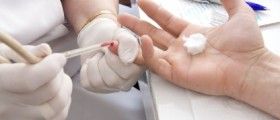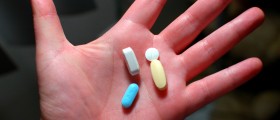
Bodybuilding and acetyl-L-carnitine
The body is able to produce this compound on its own and the greatest part of it exists in the cardiac and skeletal muscles. However, it can also be taken in through various foods (red meat, some vegetables and grains, for example) or through nutritional supplements. Its positive effects on the human body and health are numerous, but the reasons why athletes and bodybuilders use it are primarily related to the fact that oxidation of fatty acid is facilitated, which further leads to burning more fat and creating more energy. Due to the increased energy levels, the bodybuilders are more capable of maintaining their athletic performance. They insist on the use of acetyl-L-carnitine in order to keep the level of the energy at the peak, but in the greatest majority of cases, there is actually no need for that.
The dosage that the manufacturers recommend is from 1000 to 4000mg on a daily basis, but since the capsules usually contain the concentration from 250 to 500 mg, it usually means that the recommended dosage should not be taken all at once, but is should be divided into two or three dosages.
What else is acetyl-L-carnitine beneficial for?
Besides for the bodybuilders, this compound has proven to be more than beneficial and helpful in the treatment of various medical conditions. Since several studies suggest that it does improve the cognitive function and memory in those who suffer from memory problems that are caused due to age, alcoholism, or Alzheimer’s disease, even though it is not officially approved by the FDA in the treatment of these conditions, many people use it. Aside from this, its benefits are obvious in cases of sexual dysfunction, depression and several other symptoms of andropause. Nerve pain, which is caused due to the diabetes, can also be relieved if this supplement is used, and there are cases in which the flow of the blood to the brain was improved after the use of only a single dose of acetyl-L-carnitine.
Other conditions in which the improvement was noticed after the use of the compound in question are also cataracts, Down syndrome, Peyronie’s disease, poor circulation and facial paralysis. The truth is that more evidence on all this is necessary, but until then, there is no reason why those who are not a part of the risk group should not give it a try. The possible side effects are not severe and they are not reported as frequent.






_f_280x120.jpg)










Your thoughts on this
Loading...